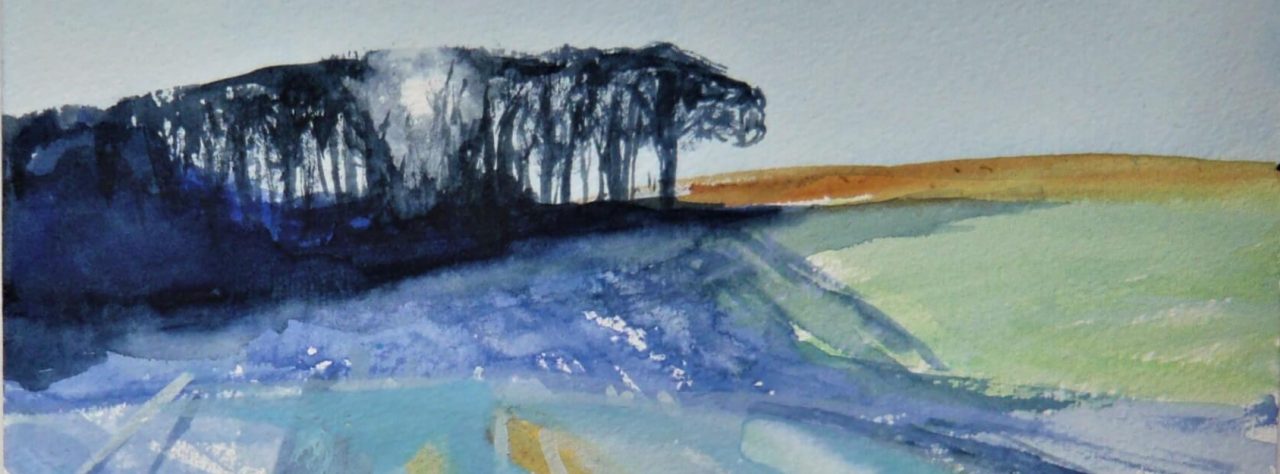
Everest from the summit of Mount Kala Pattar (5545m). In the foreground is the Khumbu Glacier, the summit of Everest is the dark peak against the central skyline, with Everest West Shoulder directly in front and Nuptse (7879m), apparently the tallest peak in the picture, because of the perspective, to the right of them. Changtse (7550m) across the border in Tibet, is to the left. Lhotse (8501m) can be glimpsed to the right of Everest, behind Nuptse.

Cairns to climbers who have died on Everest, near Dhugla (Thokla). And a very sobering sight they are, too. Some have plaques, some simple inscriptions, many are anonymous. As you walk further up the Thokla Pass, you look back to this line of cairns on the ridge.

Local transport. A caravan of dzo – a cross between cattle and yaks – pass stone seats provided for travellers. Dzo tend to be both larger and stronger than yaks, an obvious advantage in an animal used for carrying heavy cargoes! They can also go down to lower altitudes than yaks, who are adapted for life at high altitudes.

Traditional door in old house, Khumjung village, near Namche Bazaar.

Inside The temple of Tengboche monastery. Although the temple is beautiful both inside and out, my dominant memories are of sounds – the chanting of the monks at puja, when I sat in the temple one afternoon, completely unable to meditate, since I could not focus on anything except my freezing feet. Also the sounds of the bells, drums and horns that woke me at 7 o’clock in the morning – beats an alarm clock any time!

Entrance to Tengboche Monastery and Temple.

Khumbu Glacier at Lobuche.

Ama Dablam from Khumjung village. In the foreground is one of the schools built by Sir Edmund Hillary, rightly revered throughout the Sherpa community for the huge amount of work that he and his Foundation put into improving the lives of the poor in this area.

Traditional house in Khumjung.


Looking down onto the Khumbu Glacier . Although looking rather like a rubble-strewn pathway, in places one can see the bluey-green ice. Here it shows clearly around a glacial lake. As I watched, I could hear the sounds of cracking and splitting as the glacier ground it’s way incredibly slowly downhill.

Yak skull on mani stone with katas (silk scarves) and prayer flags. Cairns are not always simple piles of stones.

Yak train crossing new bridge near Phunki Drengka. The old bridge was washed away.

The old bridge. Testament to the tremendous power of floodwater.

Khumjung Gompa, where a yeti skull is kept.

The yeti skull.

Sunset, and Ama Dablam appears through the clouds.

Looking south from Dengboche.

The Spirit of the Himalaya.

Moody autumn shot just outside Lukla.

Nuptse (on left) and Everest (on right) at sunset, from Tengboche. In February 2008, when I visited, I saw nothing but clouds and mist. When I returned in October we were treated to the most marvellous sunset and sunrise.

Monks blowing conch shells at morning puja, Tengboche monastery. The monks at the top left hand window are blowing the shells that make a hoarse, trumpet-like sound, during the sunrise puja.

Autumn colours.

Prayer wheels.

Ploughing a field with a wooden, dzo-drawn plough.

Namche Bazaar from above.

Carved Mani stone near Tengboche.
